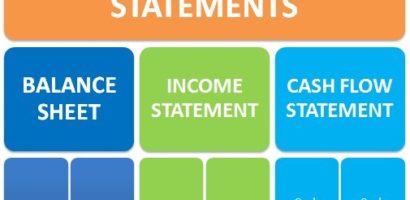To be financially savvy, you need to understand the basics of finance, which starts with your financial statement. Think of it as your final year exam results – your final exams are the ones that really matter, instead of term results.
Knowing how to read a company’s financial statement is imperative when you want to make smart investment choices.
To grow wealth, you must first understand what the three parts of your financial statement are:
- profit and loss statement
- cash flow statement
- balance sheet
Understanding your statement also helps you identify what your assets and liabilities are and how your money is spent – is more money going out to service your liabilities? Are you receiving any sort of income from your assets? Do you have assets? Your financial statement can tell you a lot about where you stand on the scale of wealth. Here’s a quick way to know how healthy your financial statement should be, and what category of wealth you’re in:
- Poor – You own plenty of liabilities, and you need to constantly keep working to feed your lifestyle. More often than not, you live paycheck to paycheck.
- Middle class – You’ve been investing in assets for a while, and own some good assets. Once the value of your good assets surpasses your net worth by 50%, you’re firmly in the middle class category.
- Financial independence – Income from your good assets surpass your expense.
- Wealthy – You have plenty of passive income coming in from your investment to keep reinvesting in other assets. Your wealth can be passed on to the next generation.
Why Do You Need a Financial Statement?
- It helps you plan your finances and understand how much in debt you are, your current liabilities, and the assets you have.
- It shows you ways you can save money from clearing off services and subscriptions you’re paying for, but never used.
- It shows you straight away whether you’re setting yourself up for financial success or financial failure.
- Knowing the truth about what your financial situation is can help you implement strategies to move faster toward financial freedom.
Making Sense of Your Financial Statement
When you look at your income column, take a look at your Active Working Income and your Passive Income.
Passive income is anything that you receive on a regular basis, with very little effort on your part to maintain this income.
You can calculate your earnings using this formula:
Cash Flow = Income – Expenses
Your financial health is considered good only if you have a positive cash flow.
Next, you want to calculate your net worth. This represents how rich you are.
Here’s how you can do it:
Net Worth = Assets – Liabilities
When looking at your liabilities, always remember to list down your mortgage and any balance on loans, whether it’s a student loan, auto loan, personal loan, or business loan. Many people also forget to include their outstanding balances on credit cards, as well as tax liabilities. You can use a tax calculator such as Taxfyle to calculate your taxes before including the total numbers in your income statement.
Finally, to assess your financial freedom, and to know how far away you are from it, use this formula:
Freedom % = Passive Income / Expenses x 100
